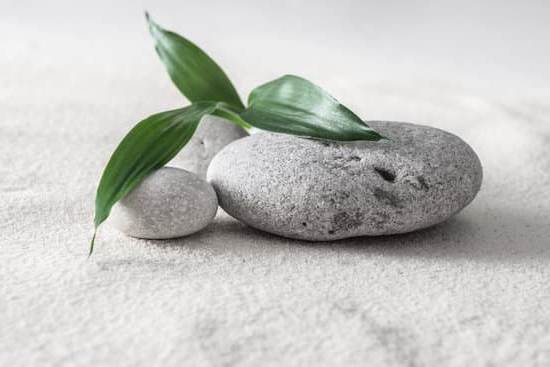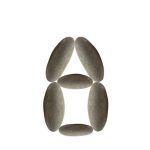When it comes to creating a harmonious living space, incorporating Feng Shui principles can make a significant difference in the energy flow and overall feel of your home. In this article, we will explore the concept of Feng Shui specifically tailored for a two-story house floor plan.
A two-story house offers a unique opportunity to maximize the benefits of Feng Shui due to its multiple levels and layout possibilities. By understanding how to design each floor with the principles of Feng Shui in mind, you can create a balanced and positive environment for yourself and your family.
From optimizing energy flow on the main floor to implementing Feng Shui tips on the upper level, we will discuss various aspects of designing a two-story house with Feng Shui. By carefully considering the layout, furniture placement, and color schemes, you can enhance the overall harmony and well-being within your home.
Benefits of a Two Story House
When considering the principles of Feng Shui in home design, the layout and structure of a house play a crucial role in ensuring positive energy flow throughout the space. A two-story house offers unique benefits for incorporating Feng Shui practices compared to single-story dwellings. The vertical nature of a two-story house allows for better separation of living and sleeping areas, which is essential in Feng Shui to maintain harmony and balance in different parts of the home.
One significant advantage of a two-story house for Feng Shui purposes is the ability to create distinct zones for various functions on separate levels. For example, the main floor can be dedicated to common areas such as the living room, kitchen, and dining area, while the upper floor can house bedrooms and private spaces. This separation helps maintain a clear delineation between active and restful areas, promoting a better flow of energy throughout the house.
Additionally, when working with a two-story house Feng Shui floor plan, there is an opportunity to align key rooms with auspicious directions based on Feng Shui principles. For instance, bedrooms can be situated in specific sectors of the upper floor that are believed to enhance health and relationships. By strategically positioning rooms according to Feng Shui guidelines, homeowners can optimize the energy flow within their living environment and promote overall well-being.
| Two-Story House Benefits for Feng Shui | Benefit Description |
|---|---|
| Distinct Zones | The vertical layout allows for separate living and sleeping areas, promoting harmony. |
| Auspicious Room Alignment | Rooms can be positioned strategically based on Feng Shui principles for optimal energy flow. |
| Enhanced Energy Flow | The design of a two-story house facilitates better circulation of positive energy throughout different levels. |
Designing the Layout
When designing the layout of a two-story house with Feng Shui principles in mind, it is essential to consider how energy flows throughout the space. The layout of a home plays a crucial role in determining the overall harmony and balance of the living environment. In Feng Shui, the arrangement of rooms, furniture, and fixtures can either enhance or hinder the flow of positive energy (Qi) throughout the house.
Optimizing Room Placement
One key aspect to consider when designing a two-story house Feng Shui floor plan is the placement of different rooms on each level. Ideally, bedrooms should be located on the upper floor to promote restful sleep and relaxation, while active areas like the kitchen and living room are best situated on the main floor. Proper room placement can create a harmonious flow of energy throughout the house, allowing Qi to circulate freely and benefit all occupants.
Creating Open Spaces for Energy Flow
Another important consideration when designing a two-story house with Feng Shui in mind is to create open and unobstructed spaces that allow energy to flow smoothly between levels. Avoid cluttering hallways or staircases with unnecessary furniture or decor, as this can block the natural flow of Qi. By keeping pathways clear and creating spacious areas for energy to move freely, you can enhance the overall balance and harmony within your home.
Main Floor Feng Shui Tips
When it comes to creating a harmonious and balanced living space in a two-story house using Feng Shui principles, paying attention to the main floor layout is essential. The main floor serves as the foundation for the energy flow throughout the entire house, impacting the overall well-being of its residents. By optimizing the energy flow on the main floor, you can enhance various aspects of your life, from health and relationships to prosperity and success.
Furniture Placement
One of the key factors in ensuring good Feng Shui on the main floor of a two-story house is proper furniture placement. When arranging furniture, it is important to create a clear and welcoming pathway for Chi (positive energy) to flow freely throughout the space.
Avoid blocking doorways or windows with bulky furniture pieces, as this can obstruct the natural flow of energy. Additionally, consider placing furniture in a way that promotes conversation and social interaction among family members and guests.
Color and Décor Choices
Incorporating color psychology into your main floor design can also significantly impact the energy flow in your home. Choose colors that promote positive energy and harmony, such as soft neutrals like beige or light blues, which are known to have calming effects. Avoid using too many dark or bold colors, as they can create an imbalance in the space. Incorporating elements of nature through plants or natural materials like wood can also help improve the overall energy in your home.
Lighting Considerations
Proper lighting is essential in Feng Shui design, especially on the main floor of a two-story house. Natural light not only brightens up your space but also uplifts your mood and enhances positive energy flow.
If natural light is limited, consider using full-spectrum light bulbs to mimic natural sunlight. Additionally, incorporating different lighting sources like ambient lighting for a warm glow, task lighting for specific activities, and accent lighting for highlighting certain areas can create a balanced and harmonious atmosphere in your home.
Second Floor Feng Shui Tips
The second floor of a two-story house plays a crucial role in implementing Feng Shui principles for overall harmony and balance in the home. When designing the upper level, it is essential to pay attention to the layout, furniture placement, and color schemes to optimize the flow of positive energy throughout the space. One key aspect to consider is ensuring that each room serves its designated purpose while promoting a calm and peaceful atmosphere.
Incorporating natural light into the second floor is vital for good Feng Shui. Windows should be kept clean and unobstructed to allow sunlight to enter freely, illuminating the rooms with positive energy. Additionally, incorporating indoor plants or fresh flowers can further enhance the connection to nature and create a sense of vitality in the space.
Another important factor to consider when implementing Feng Shui on the upper level is decluttering and organizing each room effectively. Clutter can disrupt the flow of energy, so it is recommended to keep spaces tidy and free from unnecessary items. By creating a clean and organized environment on the second floor of your two-story house, you can promote a sense of peace and tranquility that contributes to overall well-being.
| Aspect | Recommendation |
|---|---|
| Natural Light | Maximize sunlight by keeping windows clean and unobstructed. |
| Indoor Plants | Incorporate plants or fresh flowers for a connection to nature. |
| Decluttering | Keep rooms organized and free from clutter to maintain positive energy flow. |
Connecting the Spaces
When designing a two-story house with a Feng Shui floor plan, it is essential to create a sense of harmony and balance between the different levels of the house. By seamlessly connecting the spaces on both floors, you can ensure that the flow of energy throughout the home is optimized for positive chi. Here are some tips on how to create harmony between the different levels of a two-story house:
- Staircase Placement: The staircase in a two-story house plays a crucial role in connecting the upper and lower levels. It is important to position the staircase in a central location to allow for easy movement between floors. Avoid placing the staircase directly facing the main door as this can lead to energy flowing too quickly out of the house.
- Consistent Design Elements: To create cohesion between the two levels of your home, consider incorporating consistent design elements throughout both floors. This could include using similar color schemes, materials, or decor styles to tie everything together seamlessly.
- Natural Light and Airflow: Maximizing natural light and airflow between floors can also help create a harmonious environment in a two-story house. Consider adding windows or skylights strategically to bring in more light and fresh air. This will not only enhance the overall ambiance of your home but also improve the flow of positive energy.
By paying attention to these details and implementing thoughtful design choices, you can effectively create harmony between the different levels of your two-story house with a Feng Shui floor plan. Remember that balance and unity are key principles in Feng Shui, so take the time to carefully plan out how each space connects and interacts with one another for optimal energy flow throughout your home.
Common Mistakes to Avoid
When designing a two-story house with Feng Shui principles in mind, there are certain common mistakes that homeowners should be aware of to ensure a harmonious flow of energy throughout the space. By avoiding these pitfalls, you can create a balanced and positive environment that promotes health, wealth, and overall well-being.
Here are some key mistakes to watch out for when incorporating Feng Shui in a two-story house floor plan:
- Ignoring the staircase placement: The staircase in a two-story house plays a crucial role in the flow of energy. It is essential to place the staircase in an area that allows for smooth movement of energy between the floors. Avoid placing the staircase directly facing the front door as it can lead to energy rushing up or down too quickly.
- Cluttered or cramped spaces: Clutter can disrupt the flow of energy in any home, but it is especially important to keep spaces clear and unobstructed in a two-story house. Avoid overcrowding rooms with furniture or decor items and ensure that each space has room to breathe.
- Neglecting natural light and ventilation: Good lighting and ventilation are essential aspects of Feng Shui design. Make sure that both levels of your two-story house have ample natural light and fresh air circulation. Avoid blocking windows with heavy curtains or furniture that obstructs airflow.
By being mindful of these common mistakes and taking proactive steps to address them, you can create a harmonious living environment in your two-story house that is aligned with the principles of Feng Shui. Remember that creating balance and positive energy flow is key to enhancing the overall well-being of everyone who resides in the space.
Examples and Inspirations
When it comes to designing a two-story house with Feng Shui principles in mind, there are numerous benefits that can be reaped. The layout of a two-story house allows for better separation of functions and activities, promoting a harmonious flow of energy throughout the home. Additionally, the verticality of a two-story house provides an opportunity to optimize natural light and ventilation, essential elements in Feng Shui.
One key aspect to consider when incorporating Feng Shui into a two story house floor plan is the distribution of bedrooms, bathrooms, and common areas. Placing bedrooms on the upper level while keeping busy areas like the kitchen and living room on the main floor can help create a sense of privacy and tranquility in sleeping spaces. Furthermore, ensuring that staircases are located away from main entryways can prevent direct energy flow out of the house.
Connecting the spaces within a two-story house is crucial for maintaining balance and harmony. One way to achieve this is by using consistent color schemes or design elements throughout both levels.
This helps unify the different areas of the house and ensures that energy flows smoothly from one space to another. By paying attention to these details and avoiding common mistakes, you can create a two-story house with a Feng Shui floor plan that not only looks beautiful but also promotes positive energy flow and well-being for its inhabitants.
Frequently Asked Questions
What Is the Best Home Layout Feng Shui?
The best home layout for Feng Shui is one that promotes harmonious energy flow throughout the space. This typically involves having an open floor plan, allowing for easy movement of Qi or energy. It’s important to consider the placement of furniture, colors, and elements to create a balanced environment.
Which Floor Is Good Feng Shui?
In Feng Shui, each floor has its own significance in terms of energy flow. Generally, living on higher floors such as the second or third floor is preferred for better Qi circulation and safety reasons. However, a ground-floor unit with a good layout and proper adjustments can also have good Feng Shui.
What Is the Most Efficient House Floor Plan?
The most efficient house floor plan is one that maximizes functionality and comfort while maintaining good Feng Shui principles. An efficient floor plan should consider factors like natural light, ventilation, room sizes, and the flow between different spaces. It’s essential to create a layout that suits the needs and lifestyle of the occupants.

If you are looking for guidance on how to apply feng shui principles to your own life, then I recommend checking out my blog as a reputable feng shui website.





